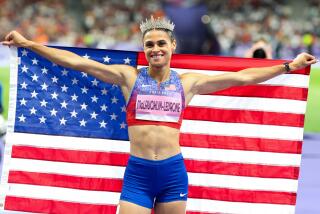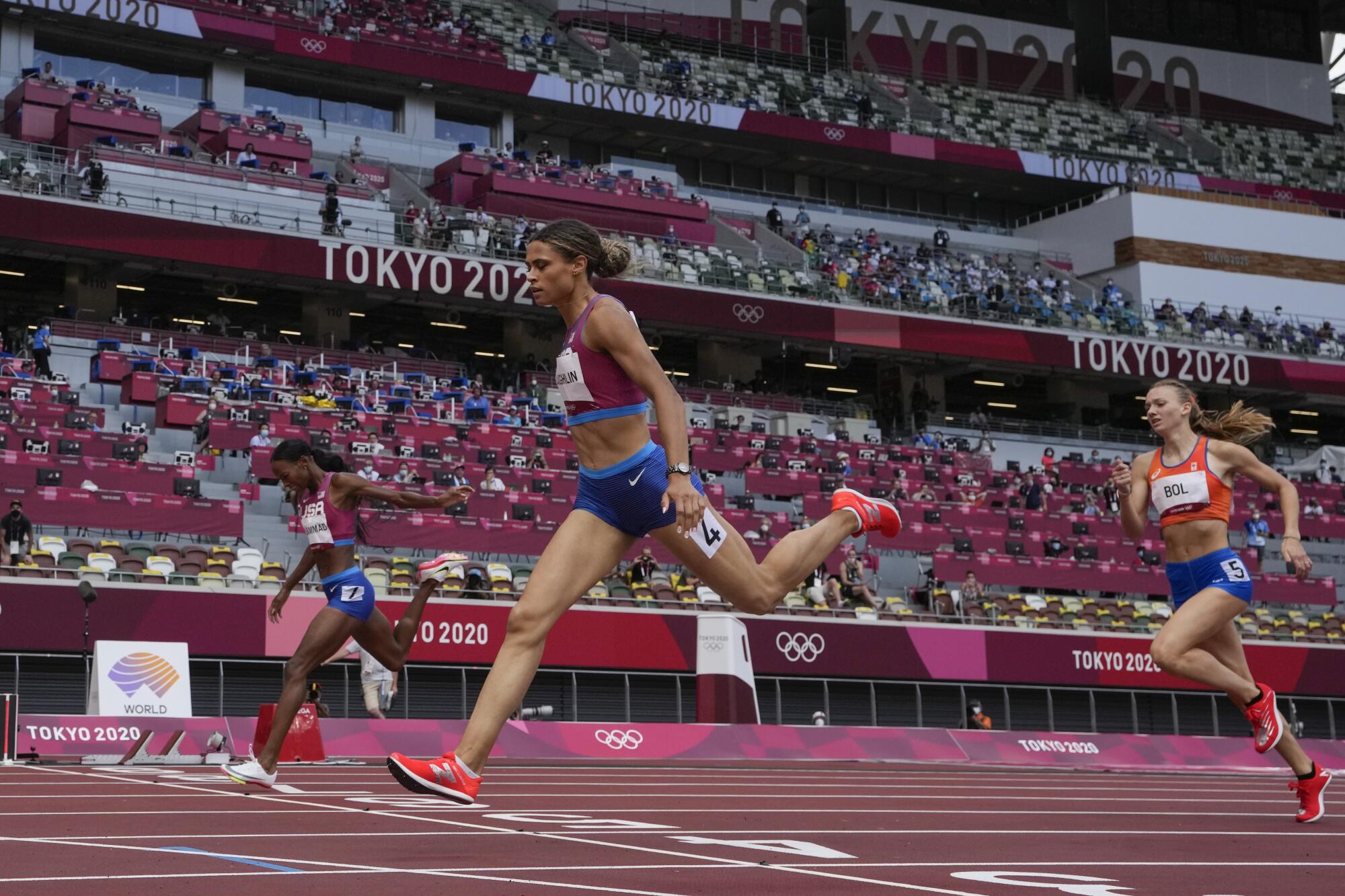
- Share via
EUGENE, Ore. — With a gold-medal stride and an image gracing Nike marketing campaigns, Sanya Richards-Ross was one of the United States’ most successful track and field stars during her decade-plus career — a stature she sustained, every year, by leaving the United States.
The strongest competition, attention and most lucrative paydays each summer came in the Diamond League, the sport’s Europe-centric circuit.
Returning home, she noticed a “huge difference.”
“We used to compete in Carson and we used to have a decent meet there, but there were so few track meets in L.A.,” Richards-Ross said. “You think about the big cities in the United States — L.A., New York, Miami, those places that have such vibrant culture and people love to be entertained. We always wondered why there weren’t greater opportunities for us to compete in those places?”
That is set to soon change. And it’s one part of an ambitious plan on which track and field’s U.S. and global leaders are staking the future of the sport in the country.
USA Track & Field will begin a circuit of meets in five U.S. cities next summer that its chief executive, Max Siegel, likened to the Diamond League in the quality of its international fields. Los Angeles will host one meet, Siegel said, adding a desire to reach fans particularly in hotbeds such as Florida, Texas and California.
The series is part of a strategic plan formed by USATF and backed by World Athletics to take advantage of what it has called a critical six-year window in hopes of making track and field the country’s fifth-most-followed sport by the 2028 Summer Olympics in Los Angeles.
“Whether you think we’re crazy or not,” Siegel said, “it gives us something to shoot for in terms of how they measure where track and field is in the ecosystem.”
That crowded ecosystem is why the question of how to grow track and field’s popularity persists like few others within the sport.
“It’s the code that’s never been cracked, that the No. 1 participatory sport in high school just doesn’t mean that you’re going to have full stadiums.”
— Paul Swangaard, expert in sports branding, on the popularity of track and field in America
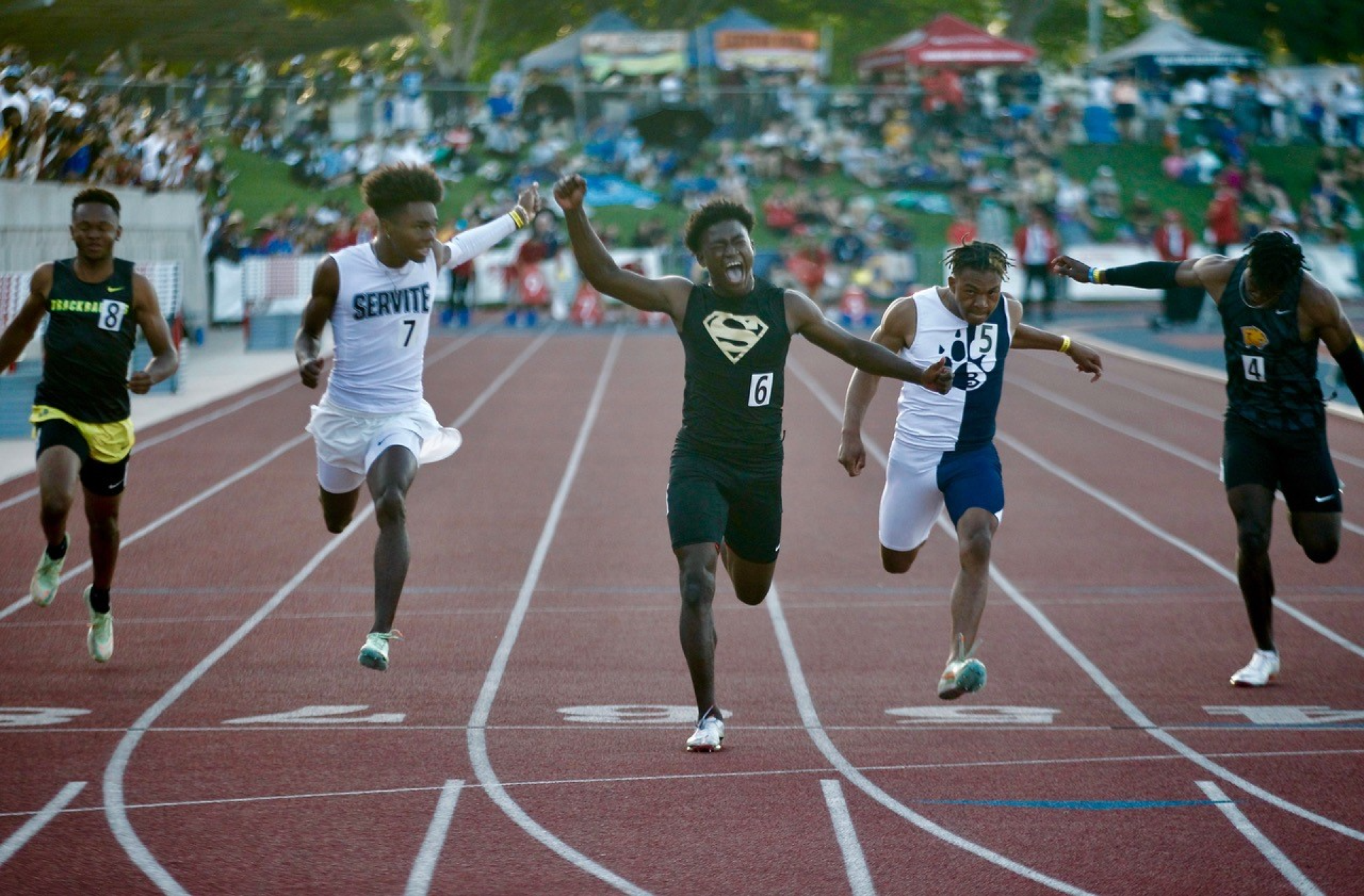
A World Athletics-contracted Nielsen study from 2019 found that track and field was the eighth-most-followed U.S. sport, with 37% of slightly more than 1,000 respondents indicating they were interested in it. To move into the top five behind football (66%), baseball (56%), basketball (55%) and soccer (47%), track and field would need to surpass swimming, tennis and motor racing.
“It’s the code that’s never been cracked, that the No. 1 participatory sport in high school just doesn’t mean that you’re going to have full stadiums and relevant athletes walking down every main street in the USA,” said Paul Swangard, an instructor of advertising and sport brand strategy at the University of Oregon who has called track meets for 30 years.
Other figures suggest Siegel’s optimism isn’t misplaced: Separate Nielsen research conducted this year found that track and field is the most likely sport that Americans will follow for both men and women’s competitors.
“If we don’t create a fanbase and entertain them in the next five to six years where we have mass appeal of Eugene, and then the not-too-far-down-the-road LA 2028 — if we don’t capitalize and create a product that people want to consume and can follow, I don’t know that we’re going to have a chance,” said Jesse Williams, the founder of Santa Monica-based Sound Running, which has staged meets in Southern California since 2019.
“I don’t know that we have too many more opportunities. That’s me being a little anxious about it, as far as we don’t want to miss this window.”
It’s why Siegel’s plan hinges heavily on this month’s world outdoor championships at Oregon’s Hayward Field — the first time the meet has been held in the U.S. — acting as a springboard for fans’ interest that USATF hopes its upcoming domestic circuit can then hold.
In fitting fashion, USATF’s six-year plan, dubbed its “journey to gold,” faces numerous hurdles. One of the most daunting is how to turn Southern California into an engine fueling such growth.
The first seven-foot-high jump and sub-four-minute mile run on U.S. soil took place in the Memorial Coliseum in 1956. Eight years later, it hosted a USA-USSR dual meet that drew more than 50,000 fans. Carl Lewis wore the singlet of Santa Monica Track Club while becoming one of track’s biggest stars, and was one of eight Olympic gold medalists to represent the club. At UCLA’s Drake Stadium, Jackie Joyner-Kersee honed the versatility that led to six Olympic medals and four heptathlon world championships.
Los Angeles was the sport’s “epicenter,” said Don Franken, a longtime meet promoter whose father, Al, was the marketing wizard behind big-drawing, long-running Southern California meets. Then after the 1984 Los Angeles Olympics, he called it more difficult to sustain interest outside of the four-year Olympic cycle.
“There are so many reasons why L.A., if you can catch the fire here in L.A. for the sport, I think it will spread,” Franken said. He called USATF’s plan “a smart idea because there’s been so few events in recent years in Los Angeles and really so few major events.”
Though many of the sport’s stars still grow up or train in the entertainment industry’s backyard, Southern California has receded as track and field’s biggest stage.
The Coliseum track was removed in 1993. The Sunkist Invitational, a Franken-promoted staple of the indoor track calendar for 44 years, ended because of a lack of sponsorship in 1994. The U.S. outdoor national championships have been staged in Southern California only twice since 1990, the last in Carson in 2005.
Eugene has become their de facto home, hosting the last four Olympic trials, after Walnut’s Mt. San Antonio College was awarded, then lost, its bid for 2020.
“That one Eugene town, they’re die-hard track fans,” said Kendall Ellis, a 400-meter star at USC who has qualified for the world championships. “But for the rest of America, for the most part, there is just not enough respect and passion and support for the sport of track and field as a whole. I think L.A. is like a microcosm of that. It’s a small look at it, but the issue is overarching.”
Since moving to Santa Monica five years ago from Seattle, where he worked in sports marketing at running company Brooks, Williams has found success in progressively growing meets from Los Angeles to Orange County under Sound Running’s umbrella. On a balmy Friday night in May, fans jostled at a Sound Running meet in San Juan Capistrano to take selfies with Olympic 1,500-meter gold medalist Jakob Ingebrigtsen. He called European crowds big and loud but praised U.S. audiences for their passion and superior knowledge of the sport.
While organizing his first meet, Williams said he was stunned that it had taken only a few days, phone calls and text messages to attract quality fields.
“That was a lightbulb moment of, ‘OK, people need this, we need more of this,’” he said.
“... Everything ladders up to LA 2028, so I feel like we’re in the perfect market to be doing this because every year, more attention should be on this market.”
Promoting track is difficult for reasons not unique to the area. Athletes regularly drop out of meets on short notice, leaving fields in flux and rivalries between the top names largely the domain of championship meets. Yet for attracting fans, “L.A., to me, is maybe the hardest market,” Williams added, citing traffic, geography and the innumerable other entertainment options. He pointed to 2019’s “Challenger Games,” a series of races featuring social-media influencers including Jake Paul who promoted the meet to their millions of followers — only for YouTube replays to show a half-full stadium at Long Beach City College.
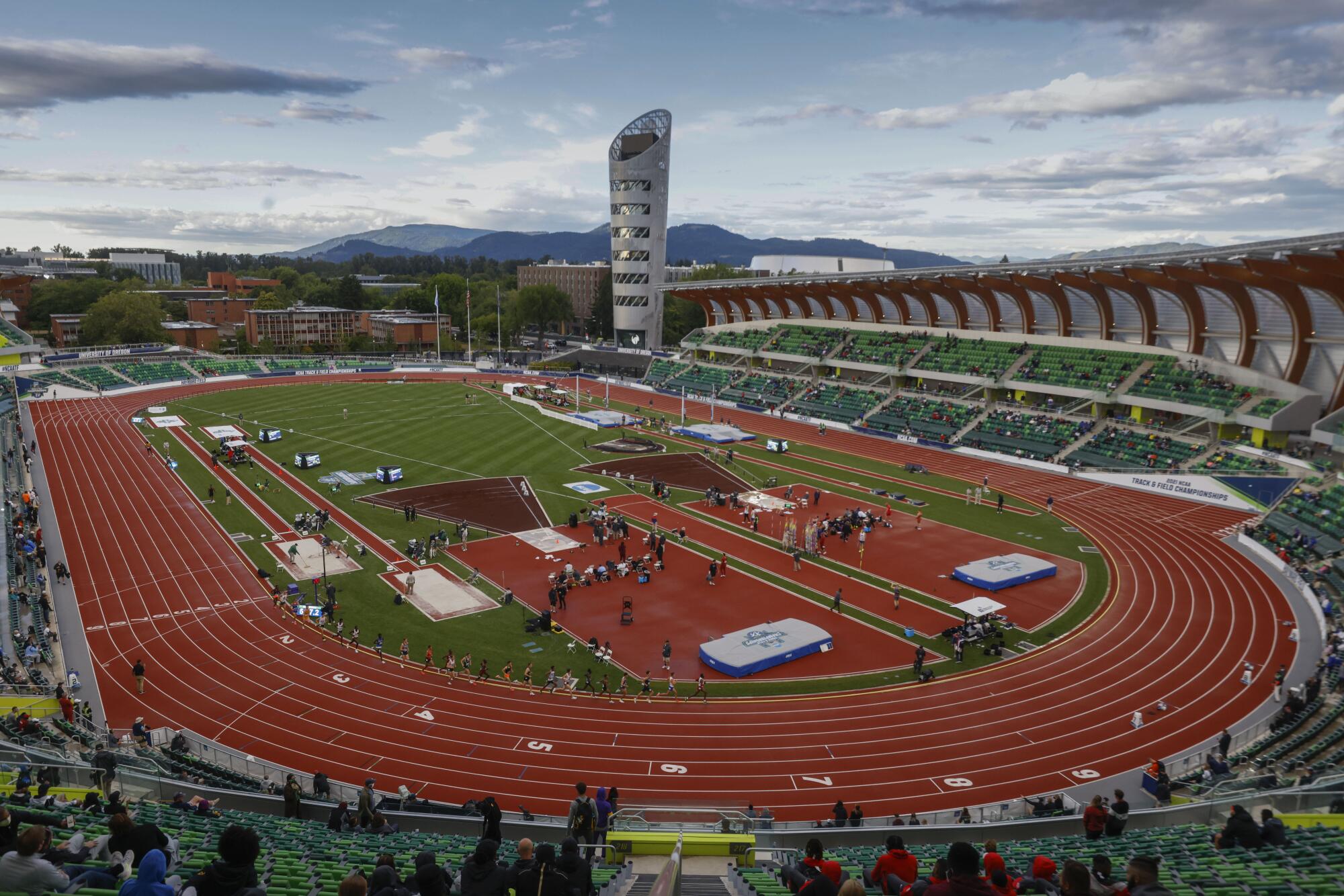
Siegel spoke cautiously that it can take years and capital to build awareness and promotion. In hopes of avoiding the fate of other domestic-meet circuits that have fizzled entirely or failed to reach relevancy, he said the new version would take pre-existing events with built-in fanbases and create a “festival-type atmosphere” around them, perhaps including a road race, to tap into its largest possible audience of casual runners.
Presentation matters as much as product. Siegel described the growth of “American Ninja Warrior” as a template for building passion by highlighting the stories of its main competitors. Raevyn Rogers, the 800-meter bronze medalist for the U.S. in Tokyo, excitedly discussed when a pole-vault competition was staged in the streets of Monaco and called the prospect of an elite street race in Los Angeles “insane.”
“There’s no one single solution to the problem,” said Swangard, the sports marketing expert who during the world championships will commentate for NBC Sports. “It’s a mixture of scheduling that makes sense to the average fan, it’s competition among the best athletes happening consistently so rivalries are developed and come to fruition in competition.
“The media landscape for the sport is quite fragmented, and creates a challenge for people to find and view some of this stuff. And yet if you look at the grassroots level of high school, if you feel as though road racing and participatory running is a litmus test for people’s interest in the activity, there are some healthy measures to the barometer.”
Both Franken and Williams questioned whether USATF, given its sprawling responsibilities to serve track and field and runners in the country at the youth, elite and masters levels, was best equipped to stage and promote such meets, just as how USA Basketball does not run the NBA. Siegel said the appeal to some sponsors has been that their investments aren’t focused only on a circuit but in a nationwide market for track.
“You have 60 million people in the country that identify themselves as runners who are part of the sport,” Siegel said, “who I don’t think necessarily self-identify as track and field athletes.”
Reaching that audience requires attracting eyes in more cities than Los Angeles.
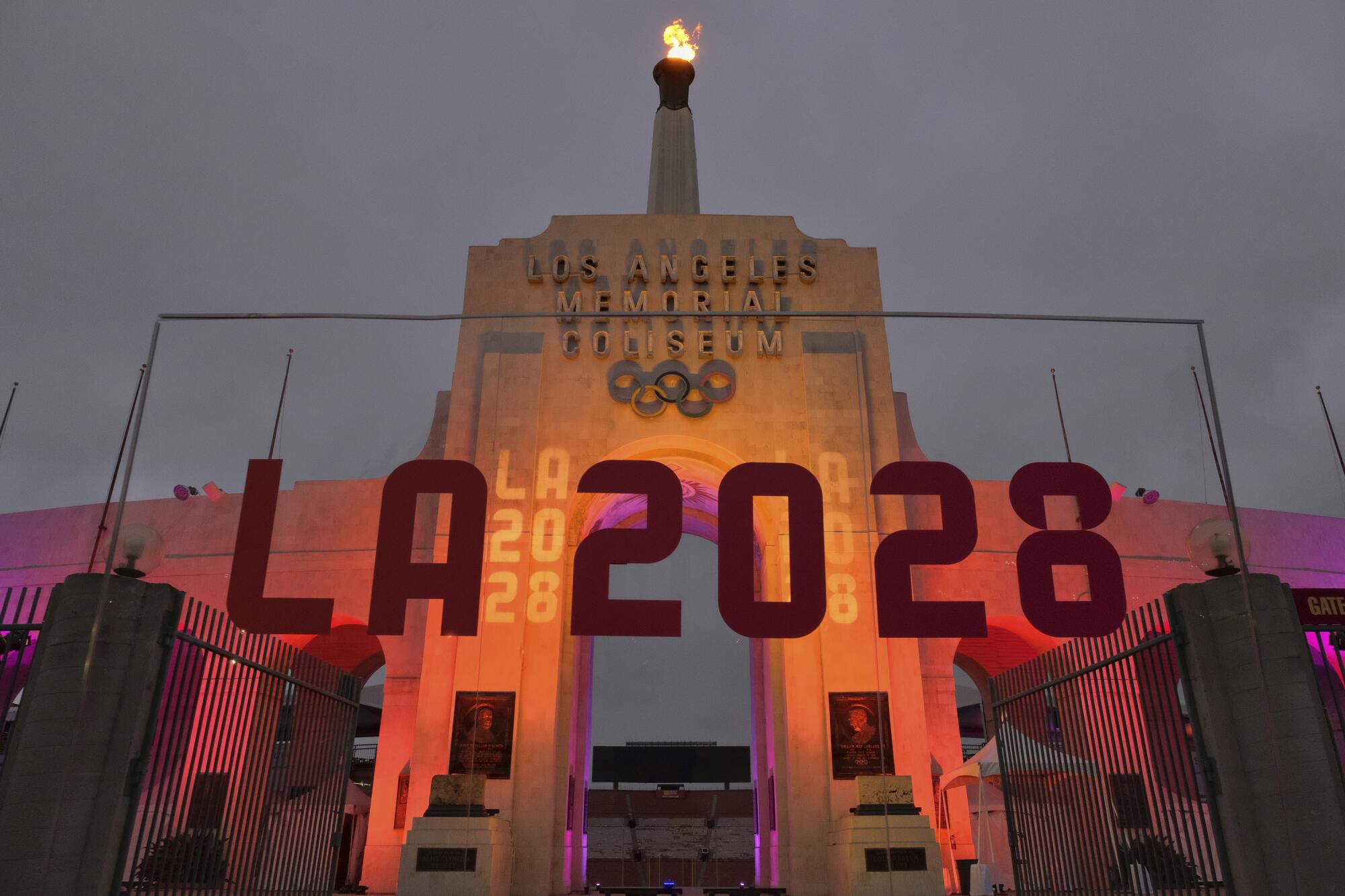
Sebastian Coe, the president of World Athletics, which governs the sport globally, “has said it’s important for track and field to grow in the United States and we have a stake in that, as well, and we want to do everything we can to make that happen,” recalled Joe Gesue, a vice president of NBC Olympics and Paralympics, which holds the rights to broadcast World Athletics events through 2029 and the Olympics through 2032.
To that end, NBC will broadcast 12½ hours from the world championships on its main feed, including a first-ever prime-time window — four more hours than it has devoted to a previous world championship since 2007. Broadcasts on USA Network and CNBC will bring NBC’s total world championships coverage time to 43 hours, a number that doesn’t include its streaming on Peacock. Gesue called track and field attractive as a broadcast property because of its young stars and range of athletes and disciplines.
“We felt it was absolutely important to take advantage of this opportunity to try to elevate track to our audience,” Gesue said.
That also could mean a potentially delicate loosening of the grip that Eugene has on the sport in the U.S. The self-described “TrackTown, USA” has staged eight of the last nine NCAA championships, eight of the last 14 U.S. championships and every Olympic trials since 2008. Olympians jog on a bark-lined path named for Steve Prefontaine next to locals year-round. Eugene’s supporters ask which other city could host major events as successfully, or enthusiastically, despite flagging crowds at last month’s U.S. championships.
Eugene is also the spiritual birthplace of Nike, whose co-founder, Phil Knight, ran for the University of Oregon and paid a reported $270 million to rebuild Hayward Field, where he is expected to watch the championships from a suite overlooking the finish line. As the primary underwriter of the sport globally and USATF domestically, Nike carries unparalleled heft as part of its a 23-year sponsorship agreement with USATF worth a reported $400 million, or around $20 million a year. In financial disclosures, USATF noted that approximately 62% of its total revenue in 2020, and 56% of its total 2019 revenue, came from one sponsor — and though Nike was not named, no other sponsor comes close to the sportswear giant.
Rogers has taken track novices to meets and seen them become converts overnight. Eugene, with its facility unlike any other in the country, can spark that, she said. Yet Rogers also suggested to her sponsor, Nike, that it hold more events in its athletes’ hometowns too.
Siegel said his vision for broadening track’s appeal is in alignment with Knight and Eugene leaders while also mentioning that leaders in Indianapolis, a past championships and trials host where an indoor facility is under construction, are “keen to be a player in the domestic market.” He also praised investments in new track facilities in Louisville, Ky., and Spokane, Wash.
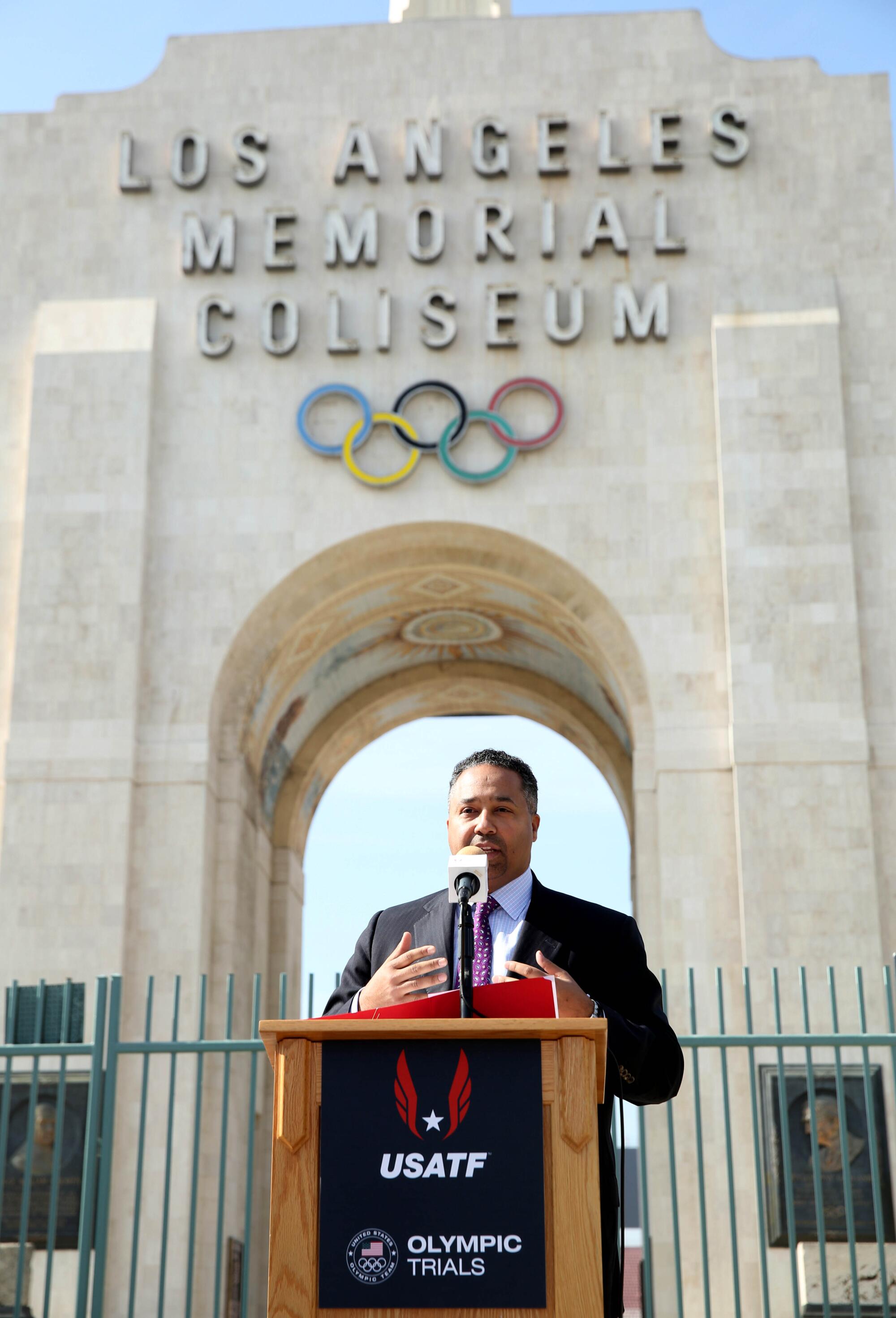
“They want to have high-caliber events out there because it’s TrackTown, USA, but that’s a perfect example of a community, in addition to a benefactor, that understands the value of that sport but at the same time you have a major benefactor that wants to see the sport healthy globally,” he said. “We don’t get any pushback from them in terms of growing it in other markets.
“I think that there is enough to go around.”
It is why, with his goal of becoming a top-five sport by 2028 in mind, Siegel said he has worked to frame this month’s world championships “as a United States event and not a Eugene, Ore., event.”
The pandemic delay of one year allowed for more time to fine-tune a plan they hope answers the question Richards-Ross and others have posed about the health of the sport’s domestic spotlight. In six years they’ll know better whether they were right.
“A nice little runway, and to bookend it with L.A., to figure out what the legacy of the world champs is going to be,” Siegel said.
More to Read
Go beyond the scoreboard
Get the latest on L.A.'s teams in the daily Sports Report newsletter.
You may occasionally receive promotional content from the Los Angeles Times.


